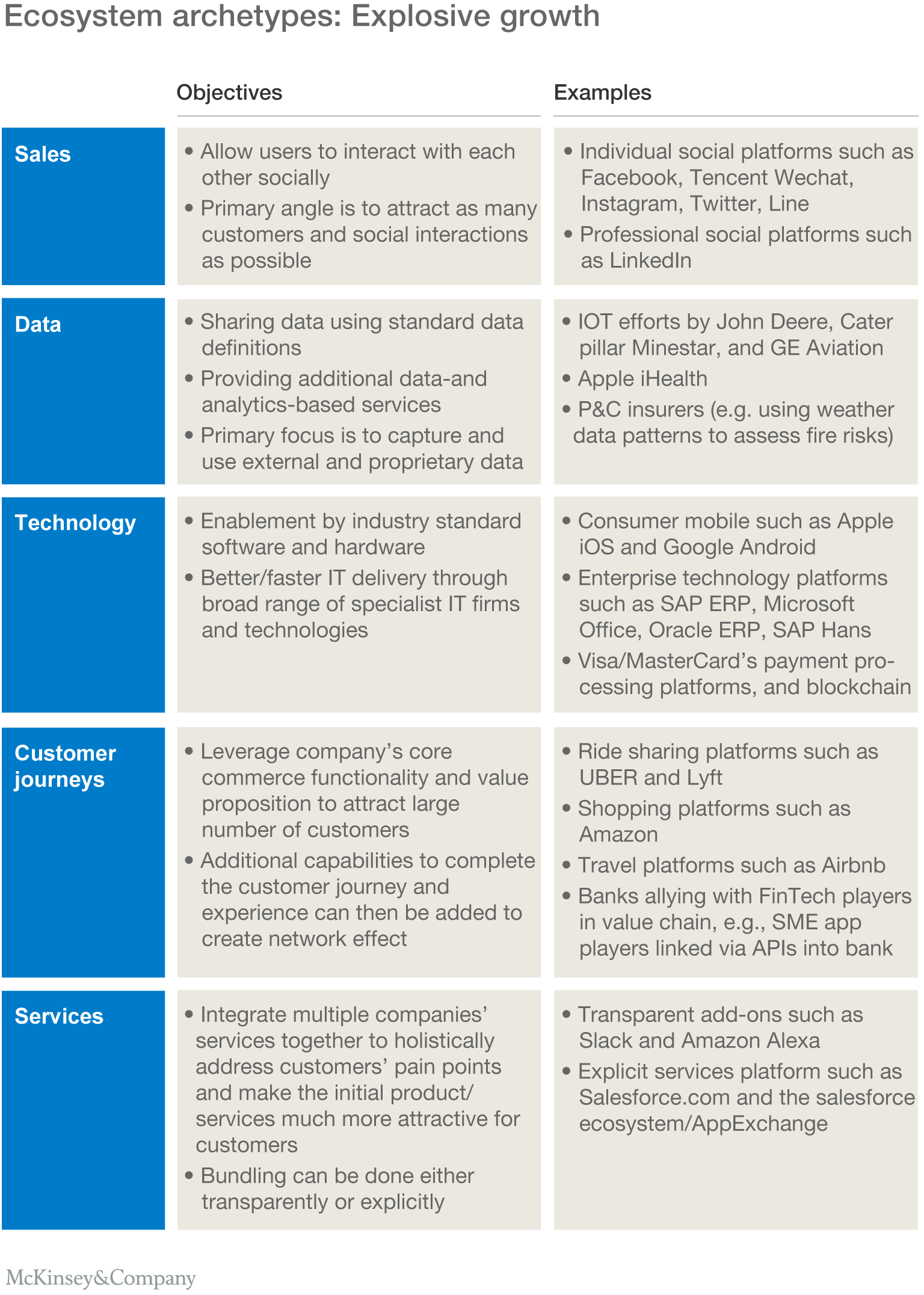Blog
Choosing to View Business Technology as an Ecosystem
February 22, 2017
Posted by: DevDigital
IT has traditionally functioned as the foundation to keep a company running. One of its core functions has been to protect company operations with firewalls and encryption to keep external technologies out. With the advance of technologies, however, a vast array of capabilities and sources of competitive advantage are emerging beyond a business’ traditional walls. Those capabilities are coalescing in a wealth of new ecosystems (see Exhibit 1).

These ecosystems often overlap. A social payment app, for example, may be part of the mobile, social, data, and banking services ecosystems. The Internet of Things (IOT) is an ecosystem where multiple applications communicate with each other as a network.
By plugging into these ecosystems, companies can get access to entire networks. They can, among other benefits, find new customers, tap into new sources of data, and improve established business processes.
CIOs and IT organizations have a huge role to play in capturing these opportunities. But they can’t do it through “business as usual.” In an ecosystem environment, an exclusive focus on “protecting the center” can limit a company’s ability to capitalize on emerging opportunities. To adapt their complex business-technology architecture to function in a world of ecosystems, CIOs will have to figure out how to simultaneously draw external technologies closer while managing security issues and getting a handle on the accelerating stream of technological innovations.
IDC predicts that by 2018, more than 50 percent of large enterprises—and more than 80 percent of enterprises with advanced digital-transformation strategies—will create or partner with industry platforms.At the same time, there will be more than 50 billion connected devices expected by 2020, according to Cisco.
These numbers point toward a radical reframing of what IT is and how CIOs manage it—not as an internal collection of information technologies (IT) but as a broad network of ecosystem technologies (ET). For the CIO, this shift also creates a significant opportunity to work closely with the CEO on business priorities and to become a prime strategic partner.
CIOs can define and shape their ET three ways:
1. Opening up internal IT to outside world
2. Internalizing external IT
3. Modernizing IT to scale innovation
Regardless of which way—or combination of ways—the CEO and CIO choose, IT moves to the forefront not just of technology but also of business-model innovation.
Getting started with ET
While building out ET is complex and based on many interdependencies, we’ve found that focusing on the following six elements gives CIOs and CEOs a big advantage in getting the most value from it:
1. Rethink the business’ strategy.
2. Develop the infrastructure.
3. Reinvent customer-management processes and structures.
4. Define the parameters for cyber-security, legal, and partnerships.
5. Cultivate an “open” mind.
6. Invest in new capabilities.
Integrating a company’s IT with third-party capabilities creates opportunities to capture substantial new sources of value. But until IT expands to become ET, the vast majority of those opportunities will remain out of reach. Read more from McKinsey.
